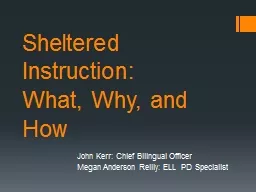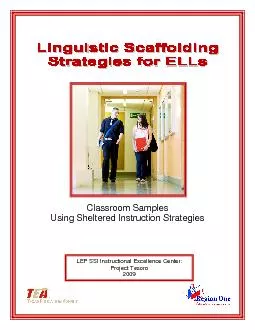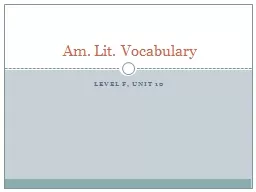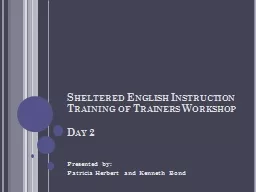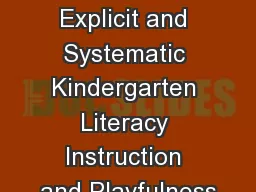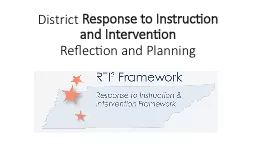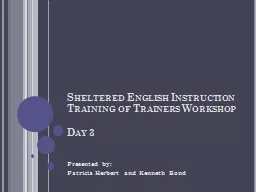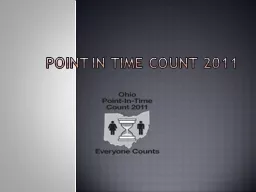PPT-Sheltered Instruction: What, Why, and How
Author : stefany-barnette | Published Date : 2018-10-26
John Kerr Chief Bilingual Officer Megan Anderson Reilly ELL PD Specialist Share out protocol Whats working with your ELLs Whats challenging with your ELLs One thing
Presentation Embed Code
Download Presentation
Download Presentation The PPT/PDF document "Sheltered Instruction: What, Why, and Ho..." is the property of its rightful owner. Permission is granted to download and print the materials on this website for personal, non-commercial use only, and to display it on your personal computer provided you do not modify the materials and that you retain all copyright notices contained in the materials. By downloading content from our website, you accept the terms of this agreement.
Sheltered Instruction: What, Why, and How: Transcript
Download Rules Of Document
"Sheltered Instruction: What, Why, and How"The content belongs to its owner. You may download and print it for personal use, without modification, and keep all copyright notices. By downloading, you agree to these terms.
Related Documents

